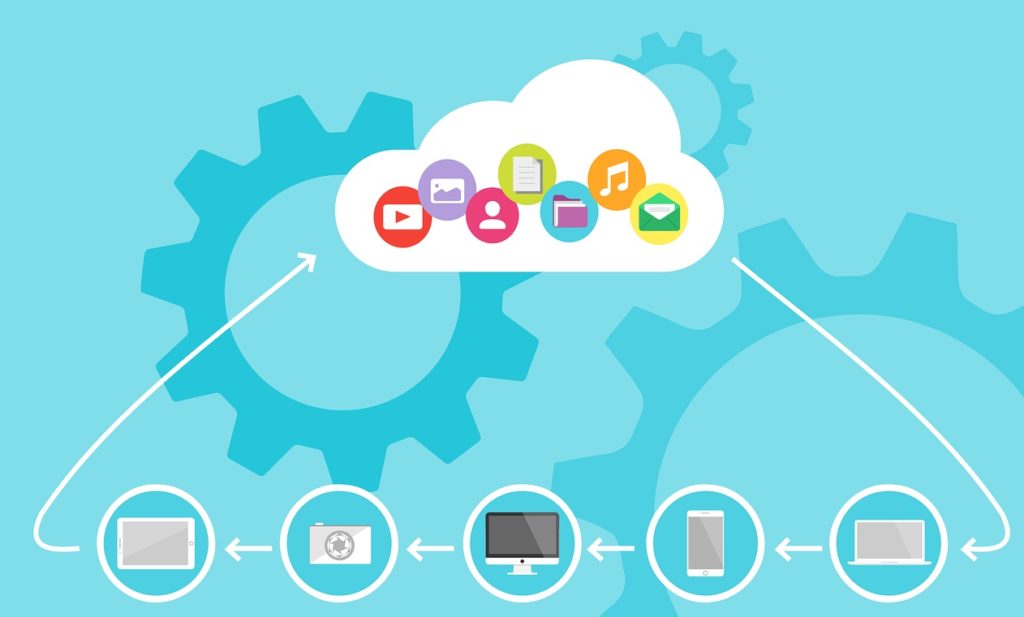
Look at these Amazing Cloud stats
If we look at the latest cloud computing statistics, they tell the global market of cloud computing is going to surpass $300+ billion in 2020. According to some stats, almost 90% of businesses are availing cloud services.
In this article, we will cover the definition of cloud computing and how cloud is suitable for your business? Find out all these questions in this article, so, tuned with us and explore the cloud article.
What is Cloud?
If someone would ask this question before a decade, then I would say cloud, which gives you rain, but for now, the definition has been changed; now, if someone asks this question, then I can sum up the meaning of cloud in these five words that “it is the communications network.”
The cloud gives you access to those servers, systems, hardware equipment that is not on your premises, but these servers or devices reside somewhere else on the Internet; with the help cloud computing, you use them through the Internet.
The idea that brings cloud innovation (Cloud Computing) is straightforward: It permits you to run applications over the Internet without purchasing, introduce, or deal with your servers.
You can manage your company’s IT operations only with a browser and an Internet connection. Applications, operating systems, servers, and other communication devices reside outside the company and within the metaphorical cloud called the Internet and are managed by the provider of the technology cloud.
The growth of cloud computing:
- The global market for Software-as-a-Service solutions is projected to grow from $80 billion in 2016 to a projected $300 billion in 2020.
- The growth rate for cloud computing is five times greater than the overall IT growth rate globally.
- 39% of businesses expect to adopt at least one cloud-based service within the next two years.
- 80% of businesses saw quantifiable business improvements with six months of choosing cloud-based software.
A New Way of Doing Business
Cloud technology changes the offerings of traditional applications in various manners:
Rapid implementation
You may be running your ERP, CRM and e-commerce applications, locally or globally, in a few months, instead of the six to twelve months necessary to install and solve the conventional problems of installable software vendors.
Competitiveness
The cloud gives smaller businesses access to world-class technology across a variety of business functions from sales and marketing through customer service to finance allowing them to act faster and compete with bigger competitors
Optimized Performance
The cloud adjusts to your performance needs, the dynamic allocation of server cycles when and where you need them, and they also automatically adapt to variations in your business.
Zero Infrastructure
The complexity of the underlying IT infrastructure is all handled by the vendor, so you don’t have to worry about establishing the server setup in your business or office premises.
Upgrades, Backups, and Data Recovery All Included
Your provider will manage software updates and upgrades for you and instigate automatic updates.
Pricing Based on Subscription
You pay what you use, often on an annual basis, unlike conventional systems in which you have to make a significant initial investment in licenses, hardware, and software. It is a great benefit due to lower cash flow and greater IT flexibilities.
Decrease in Expenses
Updates, maintenance, and administration of the system will take place in the cloud and are managed by the provider, so you will not have to waste nights or weekends on supervision by updating a new version or a server that has failed. Some recent studies show that cost savings come up to 50% in cloud-based frameworks over installable frameworks, for a time of 4 years for organizations that are around 100 staff.
High Availability
Cloud software architectures are designed from the outset to provide maximum network performance, so they often offer a better level of availability of conventional applications or locally installable solutions.
Improved Security
For many companies, the level of security, disaster recovery availability, and backup provided by a SaaS (Software as a Service) provider is far superior to what they can get to be provided.
Some couple of these suppliers offer data security levels, for example, PCI DSS compliance (for its abbreviation in English: Payment Card Industry Data Security Standard), which for certain organizations accomplish this security level separately for installable application has an extremely significant expense and even restrictive.

Improved Security
Ease of access at any time and from any place
Cloud computing is “always available,” which allows you to grow your business and support workers in remote offices, or also provide access to vendors from their mobile devices or to the work team that provides services externally, because people can have access to the entire cloud at any time of the day or night, from any browser, desktop or mobile device worldwide, 24 × 7.
Energy saving
By eliminating the need for local hardware devices, Cloud Computing reduces the overall electricity consumption of server rooms so that it can save medium-sized businesses $ 10,000 or more per year, according to a recent sustainability study.
You have control
Best of all, Cloud Computing allows you to focus on your business and not your software. You do not have to use valuable IT resources to keep your business systems running. Instead, you can re-focus more on the business strategies of your business, letting your Cloud Computing provider worry about availability, scalability, security, application maintenance, and system updates.
Also, you can be confident in growing your business both locally and in new regions of the world, without exceeding your resources from available cloud systems.
Conclusion
The world, especially website design and development companies, is going to the cloud very fast.
In the modern world, where multinational corporations, TV industries, education sectors, universities, and other industries don’t want physical infrastructure, but they are demanding virtual infrastructure setup for their businesses, no one wants to rent rooms for their hardware equipment, servers, and all and all.
Their expanded dependability, just as the usefulness of a cloud-native database, supersedes conventional data storage strategies. Combined with an expanded versatility potential, there is little uncertainty that this is how databases will be designed later.